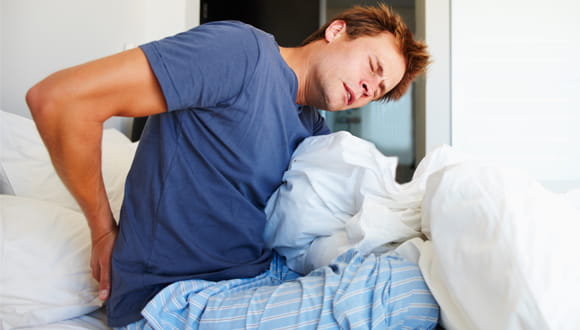You're probably already aware that passing a kidney stone can be incredibly painful. Perhaps you've heard someone compare the pain to childbirth. Or maybe someone mentioned their experience with kidney stones completely recalibrated how they rate pain. Ouch.
But while the most-discussed kidney stone symptom is often the pain — where it's felt and how bad it can get — it's not the only symptom to be aware of.
"Kidney stones are fairly common and often painful, but they're also treatable and even preventable," says Dr. Chris Kannady, urologist at Houston Methodist. "If you think you might have a kidney stone, it's important to see your doctor as soon as possible since delaying care for a kidney stone can lead to serious complications."
But, when all you've heard about kidney stones is how much they hurt, how can you tell if your pain might be kidney stone pain?
What are the symptoms of kidney stones?
"A kidney stone is a hard mass that's made up of minerals (usually calcium), certain salts and other byproducts. They can form when these substances accumulate in the area of your kidneys where urine is produced," explains Dr. Kannady.
Kidney stones can be as small as the point of a pen or as large as a ping pong ball.
"Typically, a person doesn't start noticing the symptoms of a kidney stone until it moves from the kidney into the ureter, which is the tube that carries urine from your kidney to your bladder," Dr. Kannady adds.
Kidney stone symptoms include:
- Sharp pain in the lower abdomen, typically on one side
- A burning sensation or pain while urinating
- Urinating frequently
- Feeling like you're urinating incompletely or in small amounts
- Urine that is brown, red or pink, which indicates the presence of blood
- Smelly or cloudy urine
- Feeling queasy or nauseous due to the intensity of the pain
- Signs of infection, including fever, chills and vomiting
Where is kidney stone pain located?
The sharp pain associated with a kidney stone moves as the stone progresses through your urinary tract. The most common places to feel pain are in your:
- Lower abdomen or groin
- Along one side of your body, below your ribs
- Lower back
However, while pain is certainly the most noticeable symptoms of kidney stones, it's not always the earliest sign — or even the most telling sign, for that matter.
"The pain associated with a kidney stone typically isn't felt until after its already formed and is passing through your urinary tract," explains Dr. Kannady. "In addition, due to differences in anatomy, men and women describe kidney stone pain slightly differently. Not to mention that pain itself is relative and everyone has a different threshold for it."
Plus, the intensity of the pain isn't necessarily a measure of how problematic the kidney stone might be or become. Smaller stones that are likely to pass on their own can still be very painful. And not every kidney stone that requires medical intervention comes with gut-wrenching pain.
"Any time you're experiencing pain, it's important to see your doctor. But if you're experiencing pain, even if it's only mind, in combination with the kidney stone symptoms above — and, in particular, if you have a fever or severe trouble urinating — it's definitely important to see your doctor," warns Dr. Kannady.
Can kidney stone symptoms come and go?
The length of time a stone can hang around is the primary reason that a person may feel like kidney stone symptoms come and go.
Once you start feeling the pain of a kidney stone, it can take anywhere between one to four weeks for the stone to actually pass. In the meantime, the pain can seem sporadic. Here's why:
"During a bout of kidney stones, the initial pain is typically caused by the stone making its way through your very narrow ureter tube. There can also be pain if the stone lodges itself there and blocks urine flow out of the kidney, which results in pressure buildup and painful swelling," explains Dr. Kannady.
As your body tries to move the kidney stone through your ureter, some of your pain may also be from the waves of contractions used to force the kidney stone out. The pain may also move as the kidney stone moves along your urinary tract.
"Once the stone makes it to your bladder, the pain might subside to some degree and you may notice urinary symptoms in its place. The final push from your bladder to outside of your body can reignite sharp feelings of pain, as the stone is now passing through another narrow tube called your urethra," says Dr. Kannady.
How long do kidney stone symptoms last?
As mentioned, the time frame for these symptoms can be as short as a week or up to a month and beyond. So, even if it feels like your kidney stone pain has subsided, it's important to reach out to your doctor since sporadic pain is common with this condition.
"While some kidney stones pass on their own, others require treatment — such as medications or procedures to help break up the stone or even surgical removal. Your doctor can perform the tests needed to determine whether the stone is likely to pass on its own or if you might need treatment. In addition, your doctor can help you manage the pain associated with passing the stone," adds Dr. Kannady.








